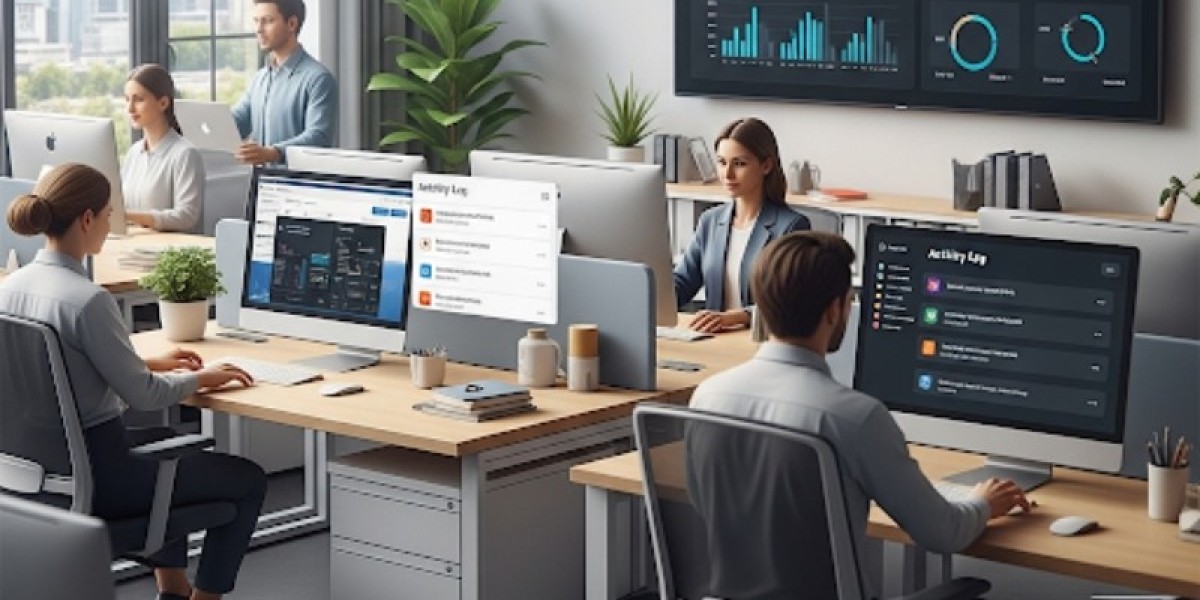Ever wondered if your employer is monitoring your activities at work? Whether you’re an employee concerned about privacy or a manager seeking to boost productivity, understanding the realities of employee surveillance is crucial.
Quick Answer: Employee surveillance refers to the practice of monitoring employee activities both online and offline to ensure productivity, protect company data, and maintain workplace safety. Common methods include tracking emails, internet usage, location, and even physical activities via cameras or access logs.
What Is Employee Surveillance?
Employee surveillance is the systematic observation of employees’ work-related behavior and communications, carried out either digitally, physically, or through a combination of both. It can involve various methods, such as computer activity tracking to monitor browsing history, application usage, and keystrokes; email and message monitoring to review work communications for compliance and security; CCTV cameras to maintain the safety of physical spaces; biometric systems to record attendance and prevent unauthorized access; and GPS tracking to monitor the real-time locations of field workers.
Why Do Companies Use Employee Surveillance?
Businesses adopt monitoring for several reasons, including measuring productivity to ensure employees are using work hours effectively, enhancing data security by detecting and preventing insider threats or data leaks, maintaining regulatory compliance to meet legal or industry-specific standards, and promoting workplace safety by preventing accidents or harassment incidents. In short, companies implement surveillance to safeguard resources while maintaining operational efficiency.
Is Employee Surveillance Legal?
Yes but with rules. Laws regarding employee surveillance and the use of AI at work vary by country and even by state. In most regions, employers must have a legitimate business reason for monitoring, and employee consent may be required, often through contracts or policy handbooks. Monitoring practices must also comply with personal privacy laws. For instance, in the United States, the Electronic Communications Privacy Act (ECPA) permits certain types of workplace monitoring, while in the European Union, the General Data Protection Regulation (GDPR) imposes stricter standards for transparency and consent. As AI at work becomes more widespread, organizations must ensure that any AI-driven monitoring tools are used ethically, transparently, and in compliance with these regulations.
Pros and Cons of Employee Surveillance
The advantages of employee surveillance for employers include improved productivity tracking, enhanced security and fraud prevention, and stronger compliance with regulations. For employees, monitoring can create a safer workplace, ensure clear accountability, and support fair evaluations. However, it also has potential drawbacks, such as reducing trust and autonomy, risking overreach into personal privacy, and possibly having a negative impact on employee morale
Best Practices for Ethical Employee Monitoring
If you’re an employer, monitoring should be transparent, limited, and purposeful. This means clearly communicating monitoring policies before implementation, limiting the scope to only what is necessary for business operations, ensuring that surveillance records are stored securely to prevent misuse, and regularly reviewing policies to stay aligned with legal requirements and employee feedback.
How Technology Shapes Modern Surveillance
With advancements in AI and cloud-based tools, surveillance is no longer limited to simple time-tracking. Modern platforms can analyze productivity trends, detect unusual patterns that may indicate security threats, and integrate with project management tools for seamless oversight. However, these technological capabilities also raise ethical concerns, making it essential to balance efficiency with respect for privacy
The Future of Workplace Monitoring
The demand for remote work has accelerated the adoption of employee monitoring tools, and we can expect to see more AI-powered analytics, stricter global privacy regulations, and hybrid models that combine monitoring with employee wellness tracking. Companies that adapt to these changes with transparency, fairness, and compliance are more likely to build stronger, more trusting work environments. Additionally, integrating insights from monitoring tools into Ad copy strategies can help businesses optimize messaging and engagement while respecting employee privacy.
Explore more - Globussoft: The Future of AI-Powered Business Starts Here!
Summary
Employee surveillance involves monitoring employees’ activities and communications to ensure productivity, protect company data, and maintain workplace safety. It can be conducted digitally, physically, or through a combination of both, using tools such as computer activity tracking, email monitoring, CCTV cameras, biometric systems, and GPS tracking. While it offers benefits like improved productivity, enhanced security, regulatory compliance, and a safer workplace, it can also reduce trust, infringe on privacy, and negatively impact morale if mismanaged. Legal frameworks vary by region, making transparency, consent, and ethical implementation essential. With advancements in AI and remote work, surveillance is becoming more sophisticated, requiring a careful balance between efficiency and employee privacy to foster a fair and trusting work environment.
FAQs
Q1: What is employee surveillance?
It’s the practice of monitoring employee activities digitally or physically to ensure productivity, security, and compliance.
Q2: Is it legal for my employer to monitor me?
Yes, if it complies with local laws and company policy, and often with your consent.
Q3: How can I tell if I’m being monitored?
Check your company handbook, IT policy, or ask HR directly. Look for monitoring software or visible cameras.
Q4: Does monitoring affect trust?
It can transparent policies and ethical use help maintain trust between employer and employees.
Q5: What’s the future of employee monitoring?
Expect more AI-driven tools, greater regulatory oversight, and a stronger focus on balancing productivity with privacy.








